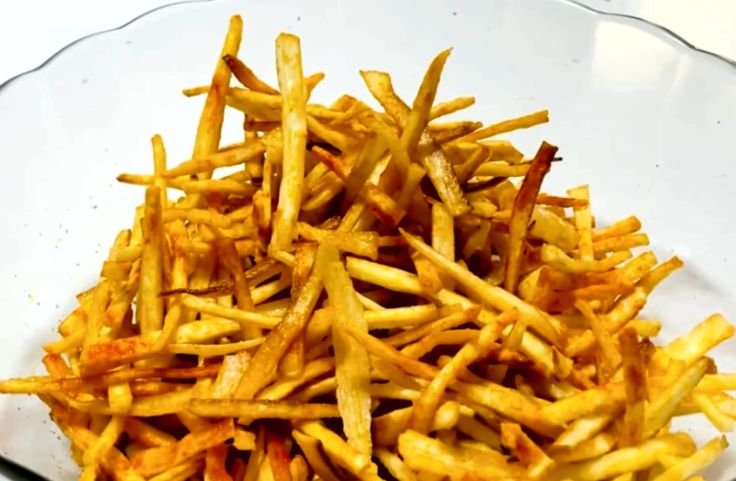Tapioca chips are a crunchy cassava snack you can make at home. Learn the simple recipe and the surprising benefits that make them a favorite in many kitchens.
You’re probably used to reaching for potato chips when cravings hit, but have you ever tried making tapioca chips at home?
These cassava-based snacks bring something different to your table, light, crisp, and full of satisfying crunch.
You get a texture that stands apart from the thick bite of cassava chips and the usual oiliness of regular chips.
What makes tapioca chips so enjoyable is not just how they taste but how easy they are to prepare.
With a few pantry ingredients and a bit of care, you can turn cassava root into a snack that works with any dip or spice blend.
In this post, you’ll walk through a simple recipe and get practical tips to make your batch turn out just right.
You’ll also see why more people are adding them to their snack rotation.
Recommended: Tapioca Snacks You Haven’t Tried
Table of Contents
- What Are Tapioca Chips?
- How to Make Tapioca Chips at Home
- Popular Variations of Tapioca Chips
- Nutritional Facts and Health Aspects of Tapioca Chips
- How to Make Tapioca Chips at Home
- Tapioca Chips vs Cassava Chips: What’s the Difference?
- Creative Ways to Enjoy Tapioca Chips
- Conclusion
- Frequently Asked Questions
What Are Tapioca Chips?
Tapioca chips are a crispy snack made from the starchy root of the cassava plant. The chips are prepared by peeling fresh cassava roots, slicing them thinly (often 1-2 mm thick), soaking them in water to remove excess starch, and then frying or baking them until golden and crunchy.
Typically seasoned with salt and sometimes enhanced with spices like chili or garlic powder, tapioca chips are popular for their light, crispy texture and versatility as a snack. T
They are naturally gluten-free and enjoyed globally, often as an alternative to potato chips, with regional variations in flavor and preparation.
Related Posts
Guide to Yuca Fries aka Cassava Fries or Yuca Frita
The Easy Way to Make Tapioca Tortillas
Vegan Tapioca Recipes You Will Love
Storing And Freezing Tapioca Waffles
How to Make the Comforting Indian Sabudana
How to Make Tapioca Bubble Tea
How to Make Tapioca Chips at Home
Peel and Clean the Cassava Root
Begin with the firm roots of cassava. Thorough washing removes dirt while peeling eliminates toxins in the skin.
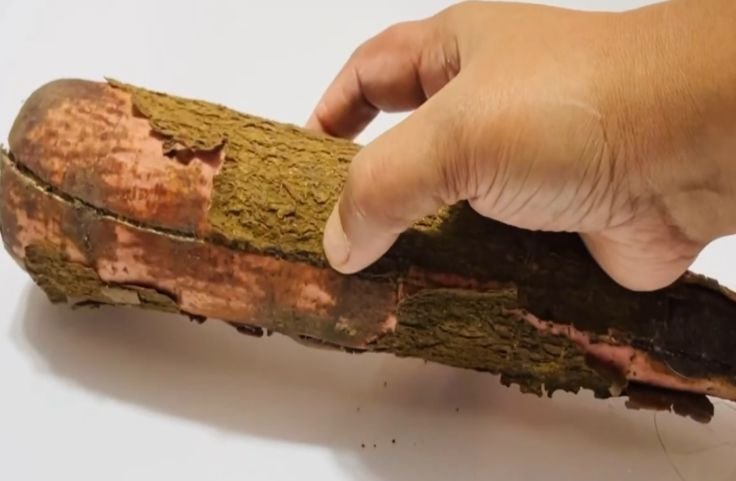
This step ensures safety and taste. Clean, peeled roots form the base for the snack and make sure the final product turns out smooth and enjoyable.
Slice Thinly
Cut the peeled cassava into thin, uniform slices about 1 to 2 millimeters thick.
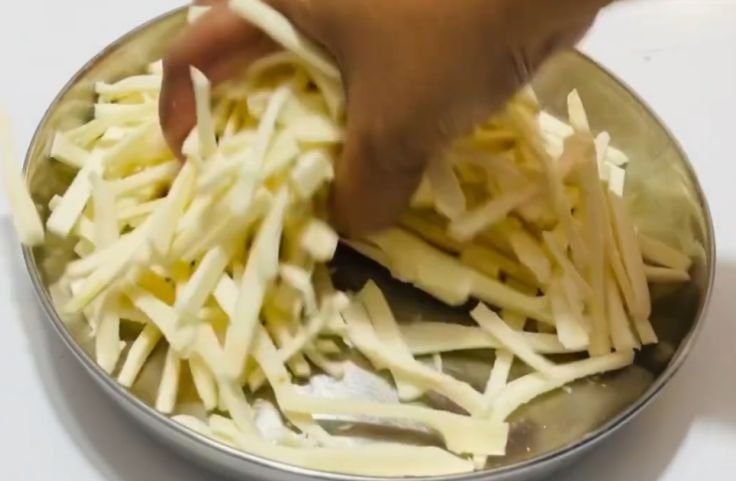
A mandoline slicer works best for consistency, which helps the chips cook evenly and crisp properly.
Soak the Slices
Place the slices in a bowl of cold water with a pinch of salt. Let them soak for 20 to 30 minutes.
This reduces surface starch and prevents the chips from sticking during frying.
Dry the Slices
Drain the slices thoroughly and pat dry using a clean towel or paper towels.
Removing moisture is key for achieving crispy chips and avoiding oil splatter during frying.
Heat the Oil
Heat 2 to 3 inches of oil in a deep frying pan or wok to 350°F (175°C). Drop in a test slice. If it sizzles and floats, the oil is ready for frying.
Fry the Chips
Add a handful of slices to the hot oil without overcrowding. Fry for 2 to 4 minutes, flipping once, until golden and crisp.
Remove with a slotted spoon onto paper towels.
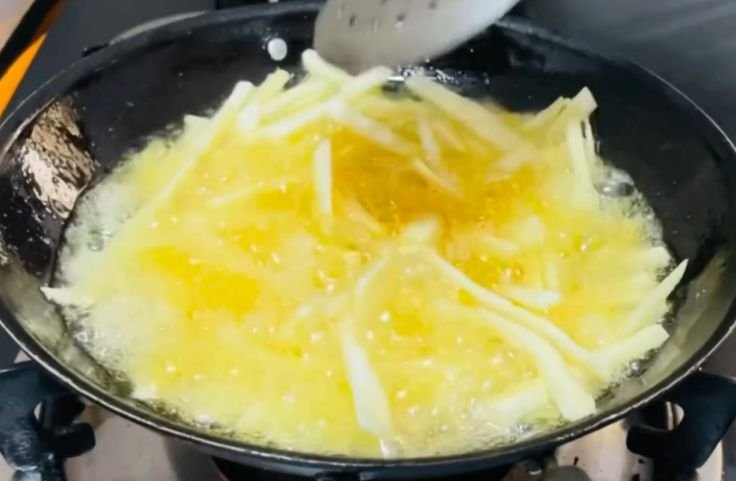
Season the Chips
While still hot, sprinkle the chips with salt and any optional spices like chili powder, black pepper, or garlic powder. Toss lightly to coat evenly without breaking the chips.
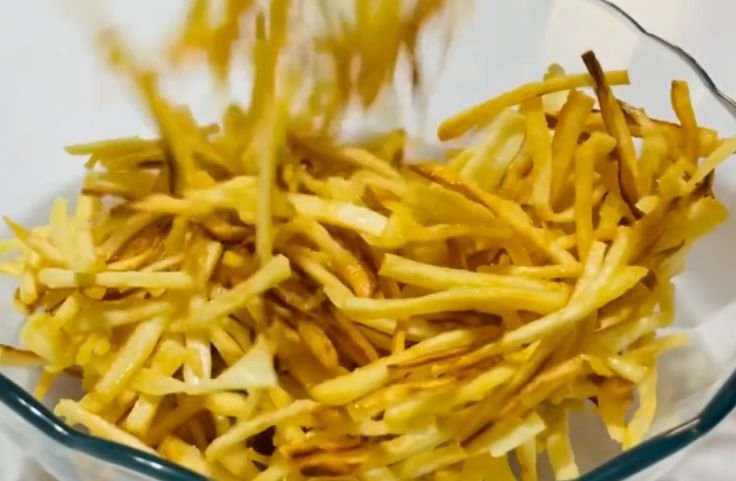
Cool and Store
Let chips cool completely before storing to maintain crispness. Keep them in an airtight container at room temperature. Enjoy within a week for the best texture and flavor.
Popular Variations of Tapioca Chips
Chips from tapioca give you more than just crunch. Their mild flavor makes a great base for seasonings that suit your mood, your taste, and your snack habits.
Salted Tapioca Chips: Simple and Classic
You can’t go wrong with the classic salted version. A light sprinkle of salt lets the flavor of cassava starch stand out without overpowering it.
It’s a clean, crisp snack you can eat any time of day. Salted chips work great on their own or with dips like hummus or salsa.
If you like things plain but satisfying, this one’s your go-to.
Masala Tapioca Chips: Spiced and Bold
If you’re in the mood for spice, masala tapioca chips bring the heat. They come packed with chili powder, turmeric, and cumin.
You get a deep, warming flavor that pairs well with tea or chilled drinks.
This version is popular across India and gives you that familiar street-snack kick with every bite.
The bold aroma hits you first, then the crunch follows.
Sweet Chili Tapioca Chips: Sweet Meets Heat
The sweet chili version strikes a nice balance. You get a hint of sugar mixed with red chili flavor, creating a playful snack that’s not too fiery.
These are especially common in Thailand and work well if you like snacks with contrast, sweet at first, spicy at the finish.
They’re perfect for late-night cravings or as a party snack to keep people guessing.
Garlic and Pepper Tapioca Chips: Earthy and Sharp
Garlic lovers, this one’s for you. Garlic and black pepper chips give off a sharp, savory flavor that lingers in the best way.
The pepper adds a mild kick while the garlic builds a deep aroma.
These chips feel more indulgent and pair well with cheese dips or even soup if you want to get creative.
Baked or Air-Fried Tapioca Chips: Crisp and Light
If you’re watching your oil intake, try baked or air-fried tapioca chips. You still get that crunch without the heaviness of fried versions.
These are great for guilt-free snacking and can carry any flavor you want, from simple salt to something more experimental.
You get a lighter texture that still satisfies, especially when you need something quick between meals.
Nutritional Facts and Health Aspects of Tapioca Chips
Chips from tapioca give you a crunchy, gluten-free snack that fits into many diets.
But knowing what’s in them helps you enjoy them without overdoing it.
Gluten-Free and Grain-Free: Safe for Sensitive Diets
If you’re avoiding gluten or grains, tapioca chips are a safe choice.
Made from cassava starch, they’re naturally free from wheat and barley, making them a reliable snack for gluten-sensitive or celiac-friendly diets without label reading stress.
High in Carbohydrates: Quick Energy Source
Chips from tapioca provide fast energy thanks to their high carb content.
If you need a quick snack before a workout or a midday boost, they help.
Just pair them with protein or fiber-rich foods to stay full longer and avoid blood sugar spikes.
Low in Protein and Fiber: Keep It Balanced
Tapioca chips are low in protein and fiber, so they won’t keep you satisfied for long.
Enjoy them in moderation, and balance with nutrient-dense snacks like yogurt, eggs, or nuts to support fullness, energy, and better overall digestion.
Lighter Than Potato Chips: Better in Some Ways
These chips absorb less oil during frying and usually skip preservatives. You still get that crunch, but with slightly less fat.
They’re a refreshing switch when potato chips feel too greasy or processed, giving you something crisp without weighing you down.
Different from Cassava Chips: Subtle but Clear
Tapioca chips come from cassava starch, not the whole root like cassava chips. This makes them lighter and airier with less fiber.
Cassava chips are firmer and denser, offering a different bite and more of the root’s natural nutrients.
| Aspect | Tapioca Chips | Potato Chips | Cassava Chips |
|---|---|---|---|
| Main Ingredient | Tapioca starch (from cassava root) | Potatoes | Whole cassava root |
| Gluten-Free | Yes | Yes (usually, but check labels) | Yes |
| Grain-Free | Yes | Yes | Yes |
| Carbohydrate Content | High – quick source of energy | High | High |
| Protein Content | Low | Low | Moderate (slightly higher than tapioca chips) |
| Fiber Content | Very low | Low | Moderate (retains more from the whole root) |
| Fat Content | Moderate (depends on cooking method) | High (especially if deep-fried) | Moderate to high (depends on frying method) |
| Calories | Moderate – varies by preparation | High | Moderate to high |
| Common Seasonings | Salt, chili, garlic, sweet chili | Salt, vinegar, barbecue, cheese | Salt, spices, curry leaves |
| Texture | Light and airy with a crisp bite | Crunchy and oily | Dense and firm |
| Shelf Stability | Good when dried and stored properly | Good | Good |
| Common Cooking Methods | Fried, baked, air-fried | Usually fried | Usually fried |
| Allergen Friendly | Yes – suitable for gluten and grain sensitivities | Varies – check for additives | Yes |
How to Make Tapioca Chips at Home
Making this chips at home lets you enjoy a crisp snack with just a few ingredients.
Here’s how to get it right from start to finish.
Ingredients You’ll Need
You only need a few basics to begin:
- Tapioca starch: 1 cup
- Water: ½ cup
- Salt: 1 teaspoon
- Optional spices: chili powder, garlic, cumin, or your favorite mix
Step 1: Mix the Dough
In a bowl, combine the tapioca starch and salt. Gradually pour in the water as you mix.
The goal is to get a smooth, flexible dough. If the dough feels too dry or sticky, adjust with a bit more water or starch.
Take your time, it should feel easy to handle, but not too wet.
Step 2: Steam the Dough
Once your dough is ready, steam it for 15 to 20 minutes. This step helps the texture set and improves the final crispness after frying.
Let it cool just enough so you can work with it comfortably.
Step 3: Slice and Dry the Chips
Cut the dough into thin, even slices. Uniform thickness matters, thicker chips may stay soft in the center.
Lay them out on a tray to dry. You can air-dry them for a few hours or use a food dehydrator.
Make sure they’re completely dry before frying to avoid sogginess.
Step 4: Fry the Chips
Heat oil in a deep pan over medium heat. Add the dried slices in small batches.
Turn them now and then until they puff up and turn golden brown. Don’t overcrowd the pan.
Once done, transfer them to a plate lined with paper towels to soak up extra oil.
Step 5: Season and Store
While still warm, sprinkle with extra salt or your favorite spices. Let them cool fully before storing.
Keep them in an airtight container and they’ll stay crisp for weeks. Enjoy them solo or as a crunchy side to any meal.
Tapioca Chips vs Cassava Chips: What’s the Difference?
You’ve seen them side by side, crunchy, golden snacks made from cassava. But tapioca chips and cassava chips are not the same.
Knowing what sets them apart helps you choose what fits your cravings, your cooking, or your dietary goals.
Source of Ingredients: What They’re Made From
Tapioca chips come from cassava starch, not the whole root. Cassava chips, on the other hand, are sliced straight from the raw root.
This basic difference affects everything from texture to taste and how your body digests each snack.
Texture and Crunch: Light vs Hearty
The chips feel crisp and airy in your mouth. Cassava chips give a thicker, firmer crunch that feels more like a root vegetable.
Depending on your preference, you might choose light and snappy or dense and chewy textures.
Flavor Profile: Subtle or Earthy
You’ll notice tapioca chips have a cleaner, mild flavor. They soak up seasoning well without competing.
Cassava chips taste more earthy, with a deeper root flavor that stands on its own. Pick what fits the dip or dish you’re making.
Nutritional Value: Starch or Fiber
Chips from tapioca are all starch, offering fast energy but little else. Cassava chips keep the fiber and small nutrients from the whole root.
If you want more than just crunch, cassava might give your snack more staying power.
How You Use Them: Snacking or Cooking
Chips from tapioca pair well with dips or sauces. Their light texture makes them ideal for party trays or snacking.
Cassava chips hold up better in soups or as sides. Their stronger build makes them great with heavier foods or spices.
Creative Ways to Enjoy Tapioca Chips
Tapioca chips are more than just a crunchy snack. These cassava-based chips can add fun, texture, and flavor to meals, dips, and even drinks.
Let’s make snack time more interesting.
Pair them with your favorite dip for a quick treat
You can dip tapioca chips in creamy hummus, spicy salsa, or tangy yogurt sauce.
The crunchy texture works well with bold flavors. It’s a simple way to enjoy your cassava snack more satisfyingly.
Sprinkle crushed chips on soups or salads
Crush your chips and use them like croutons. Add them to soups, noodles, or salads for an extra crunch.
This quick tip adds flavor and texture without much effort or extra calories.
Serve them with tea or cocktails during gatherings
Next time you host guests, serve your chips with hot tea or refreshing cocktails.
The light crunch and mild flavor make them a great pairing for drinks at casual or formal gatherings.
Add them to homemade trail mix or snack jars
Mix tapioca chips with nuts, dried fruit, or seeds for a homemade snack jar. It’s perfect for travel or busy days.
You get variety, crunch, and flavor all in one quick and portable snack option.
Season with herbs and spices for extra flavor
You can toss your chips in chili powder, garlic salt, or dried herbs. This turns plain tapioca chips into something bold and exciting. It’s easy, affordable, and gives your snack a fresh, new taste.
Conclusion
Making tapioca chips at home gives you more than just a snack. You get a light, crispy option that’s easy to prepare and easy to enjoy.
With just a few ingredients and simple steps, you can create a gluten-free treat that fits your taste, whether you like it salty, spicy, or sweet.
These chips work with dips, salads, or even on their own.
They’re also lighter than most store-bought options, which makes them a better choice when you want something crunchy without the grease.
If you’re ready to try something new in your kitchen, these cassava-based chips are a smart and satisfying way to shake up your snack game.
Frequently Asked Questions
Are tapioca chips gluten-free?
Yes, tapioca chips are naturally gluten-free since they’re made from tapioca starch, which comes from the cassava root and contains no wheat or grains.
Can I make tapioca chips without frying?
Yes, you can bake or air-fry tapioca chips for a lighter version. They’ll still be crisp, though the texture may differ slightly from deep-fried ones.
Do tapioca chips contain preservatives?
Store-bought tapioca chips may contain preservatives to extend shelf life. Homemade versions are usually preservative-free if you use natural ingredients and store them properly.
What’s the shelf life of homemade tapioca chips?
Homemade tapioca chips last up to one week in an airtight container. Keep them in a cool, dry place to maintain crispness and freshness.
References

Chimeremeze Emeh is a writer and researcher passionate about Africa’s most transformative root crop—cassava. Through his work at cassavavaluechain.com, he explores the entire cassava industry, from cultivation and processing to its diverse applications in food, health, and industrial use.
He also writes for palmoilpalm.com, where he shares his extensive experience and deep-rooted knowledge of palm oil, covering red palm oil, palm kernel oil, and refined products. His work there reflects his lifelong connection to agriculture and his commitment to promoting sustainable value chains in Africa.
Driven by curiosity and purpose, Chimeremeze aims to shed light on how cassava continues to empower communities, strengthen food systems, and link traditional farming wisdom with modern innovation.

